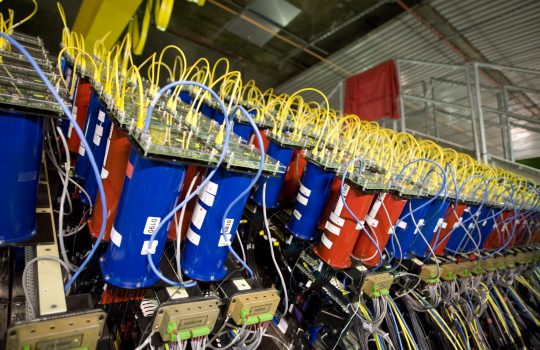Les neutrinos peuvent-ils résoudre le mystère de l’antimatière?
From pieuvre.ca, Sept. 24, 2019: Une équipe de chercheurs dirigés par Christopher Mauger, dans une étude récemment publiée, avance certaines options pouvant faire en partie la lumière sur cet étrange phénomène et répondre à d’autres questions dans le domaine de la physique fondamentale. Dans le cadre du programme CAPTAIN représentent une première étape importante pour la mise sur pied du DUNE, une installation expérimentale pour l’étude des neutrinos et de la physique des particules.


